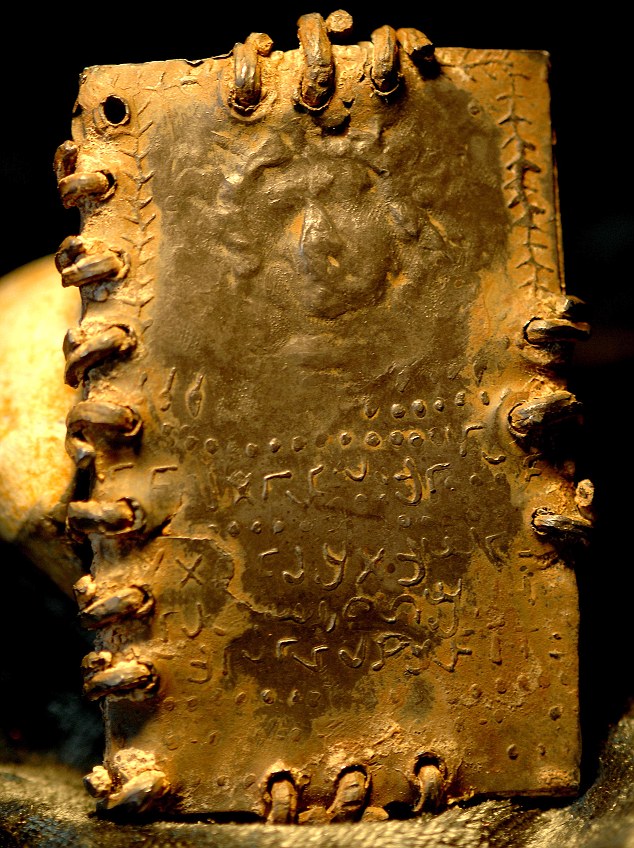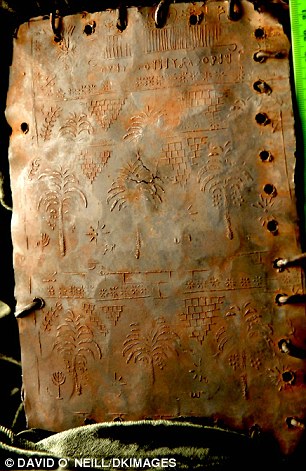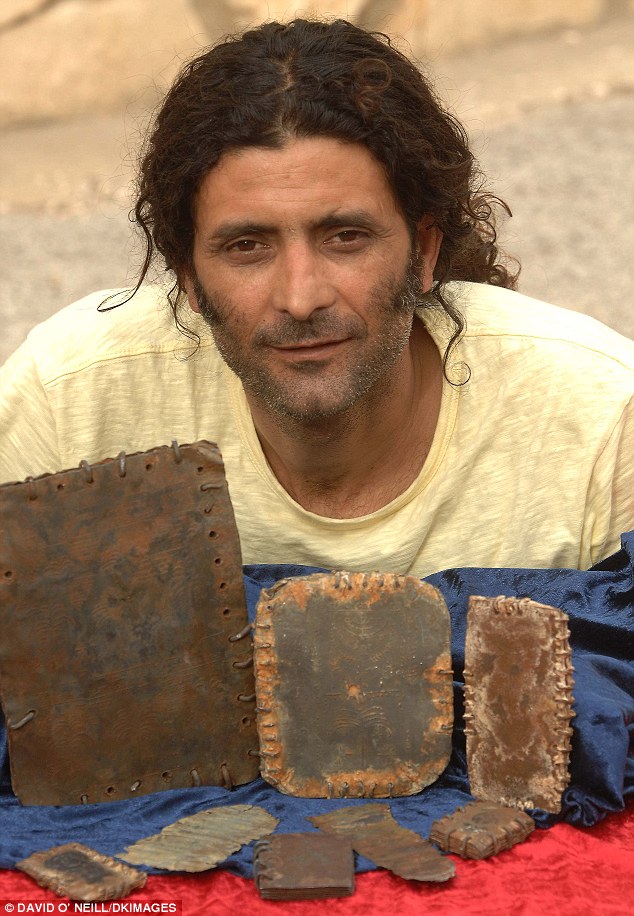I came across this new story on the plates today and there are some interesting new factors that I’ll sum up for you below:
- One of the booklets appears to bear the words ‘Saviour of Israel’ – one of the few phrases so far translated as well as a face that some think might be that of Jesus.
- According to sources in Saham, they were discovered five years ago after a flash flood scoured away the dusty mountain soil to reveal what looked like a large capstone. When this was levered aside, a cave was discovered with a large number of small niches set into the walls. Each of these niches contained a booklet. There were also other objects, including some metal plates and rolled lead scrolls.
- The cave is less than 100 miles from Qumran, where the Dead Sea Scrolls were discovered
- The codices seen by The Mail on Sunday range in size from smaller than 3in x 2in to around 10in x 8in. They each contain an average of eight or nine pages and appear to be cast, rather than inscribed, with images on both sides and bound with lead-ring bindings. Many of them were severely corroded when they were first discovered, although it has been possible to open them with care.
- Many of the books are sealed on all sides with metal rings, suggesting they were not intended to be opened.
- The books are currently in the possession of Hassan Saida, Saida, who is in his mid-30s and married with five or six children and claims he inherited the booklets from his grandfather.
- Saida’s motives are complex. He constantly studies the booklets, but does not take particularly good care of them, opening some and coating them in olive oil in order to ‘preserve’ them.
- In contrast to Saida’s story, there are claims that they first came to light five years ago when his Bedouin business partner met a villager in Jordan who said he had some ancient artifacts to sell. Saida was said to have purchased the books because he thought they contained magical powers and then smuggled many of them into Israel.
- The Israeli Antiquities Authority believed the booklets were forgeries on the basis that nothing like them had been discovered before.
- Samples were sent to the Swiss National Materials Laboratory at Dubendorf, Switzerland. The results show they were consistent with ancient (Roman) period lead production and that the metal was smelted from ore that originated in the Mediterranean. Dr Northover also said that corrosion on the books was unlikely to be modern.
- Jordan is trying to do everything is can to get the records returned to them.
- The director of Jordan’s Department of Antiquities, Ziad al-Saad, has few doubts. He believes they may indeed have been made by followers of Jesus in the few decades immediately following his crucifixion.
So the controversy continues. Below is a link to the article and some photos I pulled out for convenience. I really love this kind of stuff but it really drives me nuts when people create forgeries. There seems to be some evidence that they are real so I’ll keep watching, but the conflicts around their origins make me a little suspicious.
Here is the link to Daily Mail article so you can read the whole thing:
http://www.dailymail.co.uk/news/article-1372741/Hidden-cave-First-portrait-Jesus-1-70-ancient-books.html


